Презентація на тему «The Language of the British Isles»
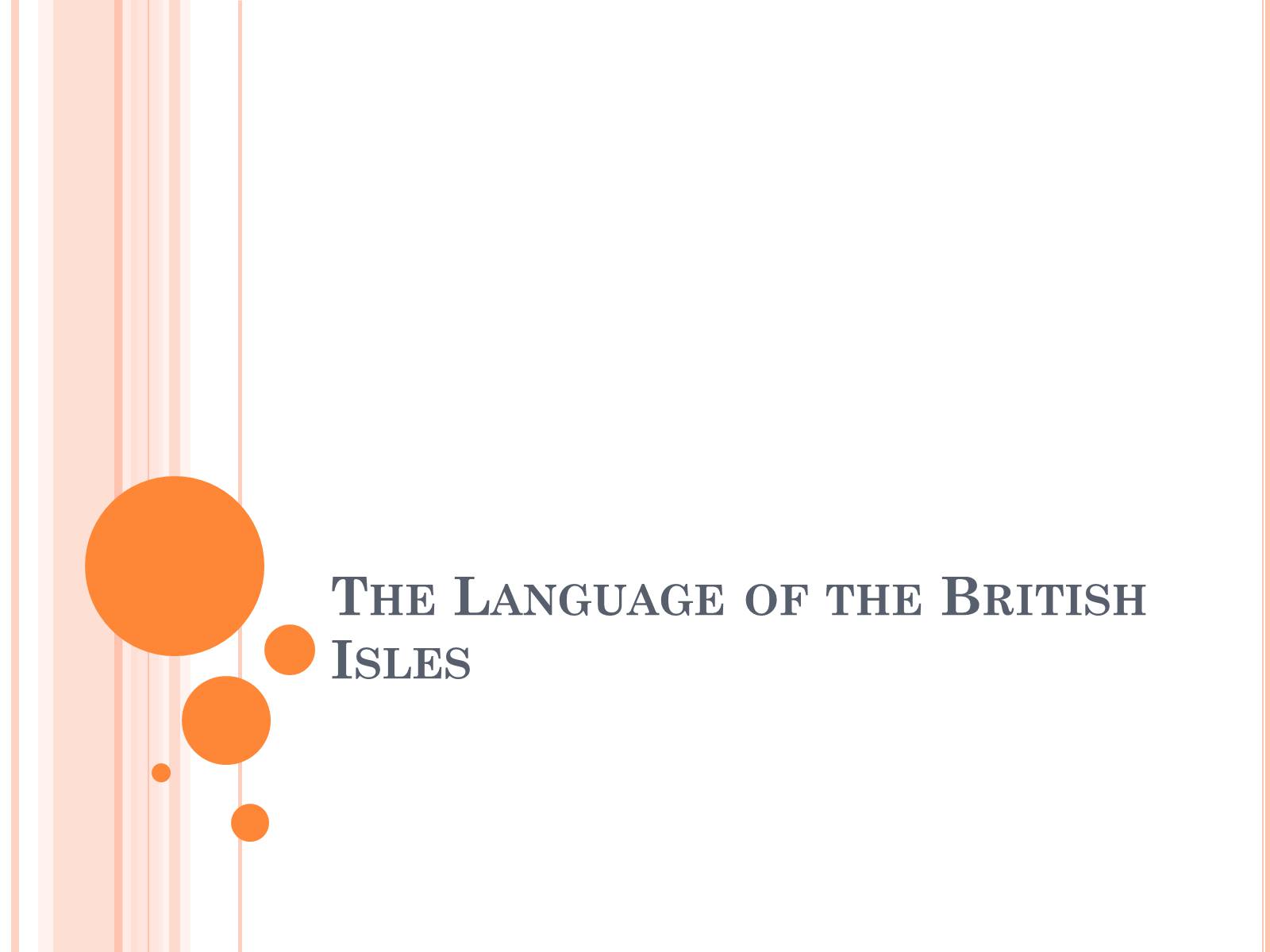
The Language of the British Isles
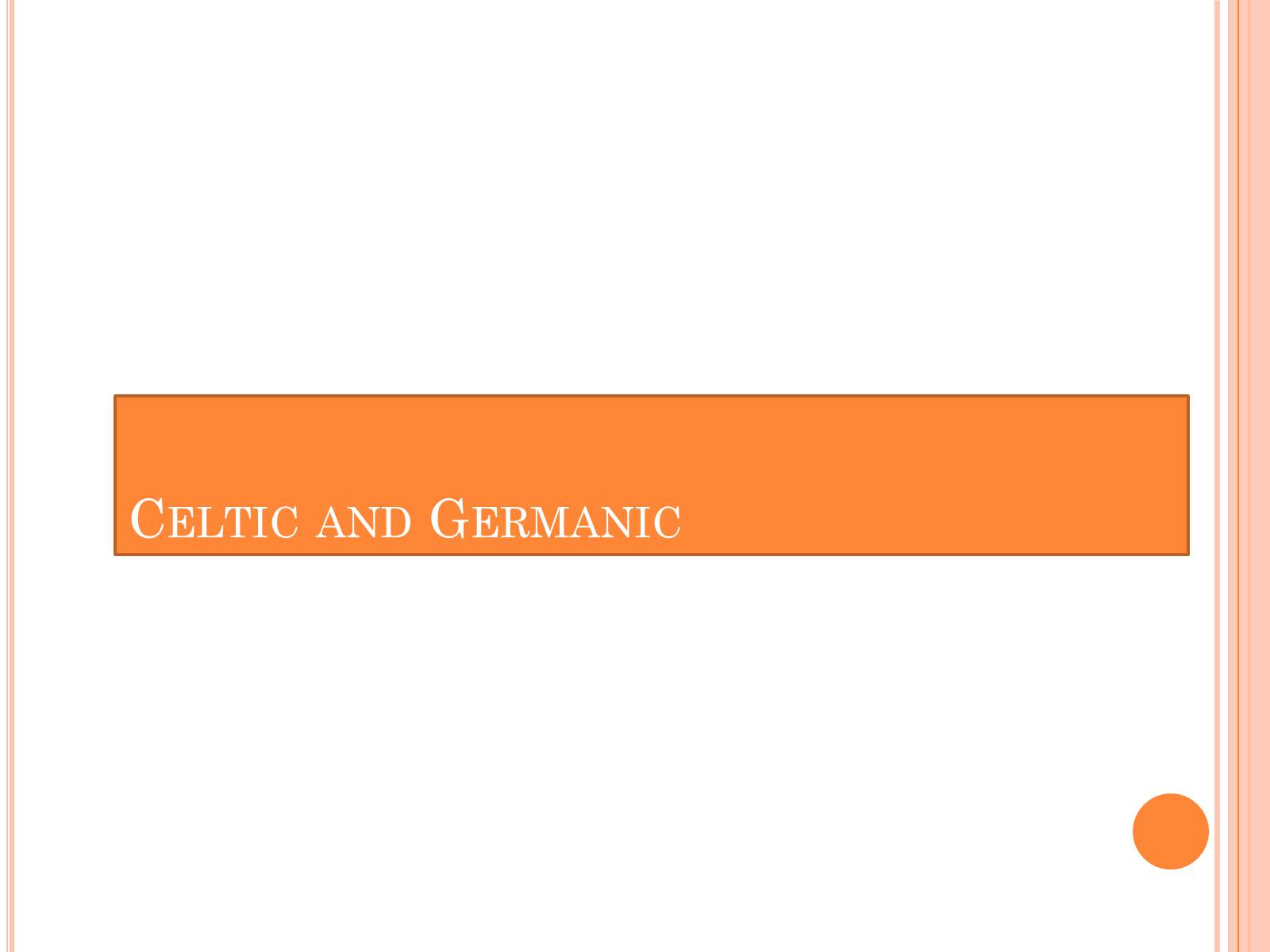
Celtic and Germanic
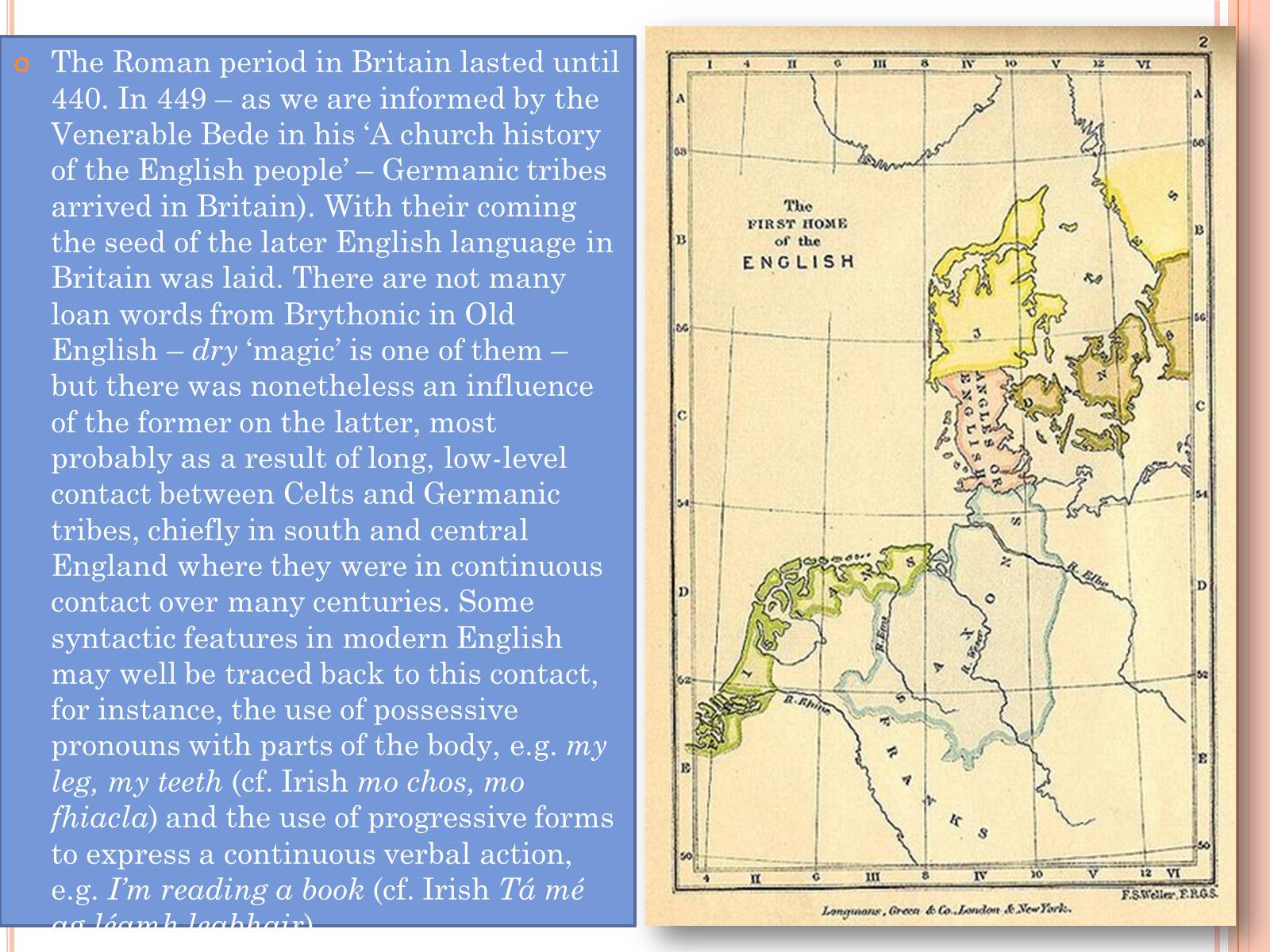
The Roman period in Britain lasted until 440. In 449 – as we are informed by the Venerable Bede in his ‘A church history of the English people' – Germanic tribes arrived in Britain). With their coming the seed of the later English language in Britain was laid. There are not many loan words from Brythonic in Old English – dry ‘magic' is one of them – but there was nonetheless an influence of the former on the latter, most probably as a result of long, low-level contact between Celts and Germanic tribes, chiefly in south and central England where they were in continuous contact over many centuries. Some syntactic features in modern English may well be traced back to this contact, for instance, the use of possessive pronouns with parts of the body, e.g. my leg, my teeth (cf. Irish mo chos, mo fhiacla) and the use of progressive forms to express a continuous verbal action, e.g. I'm reading a book (cf. Irish Tá mé ag léamh leabhair).
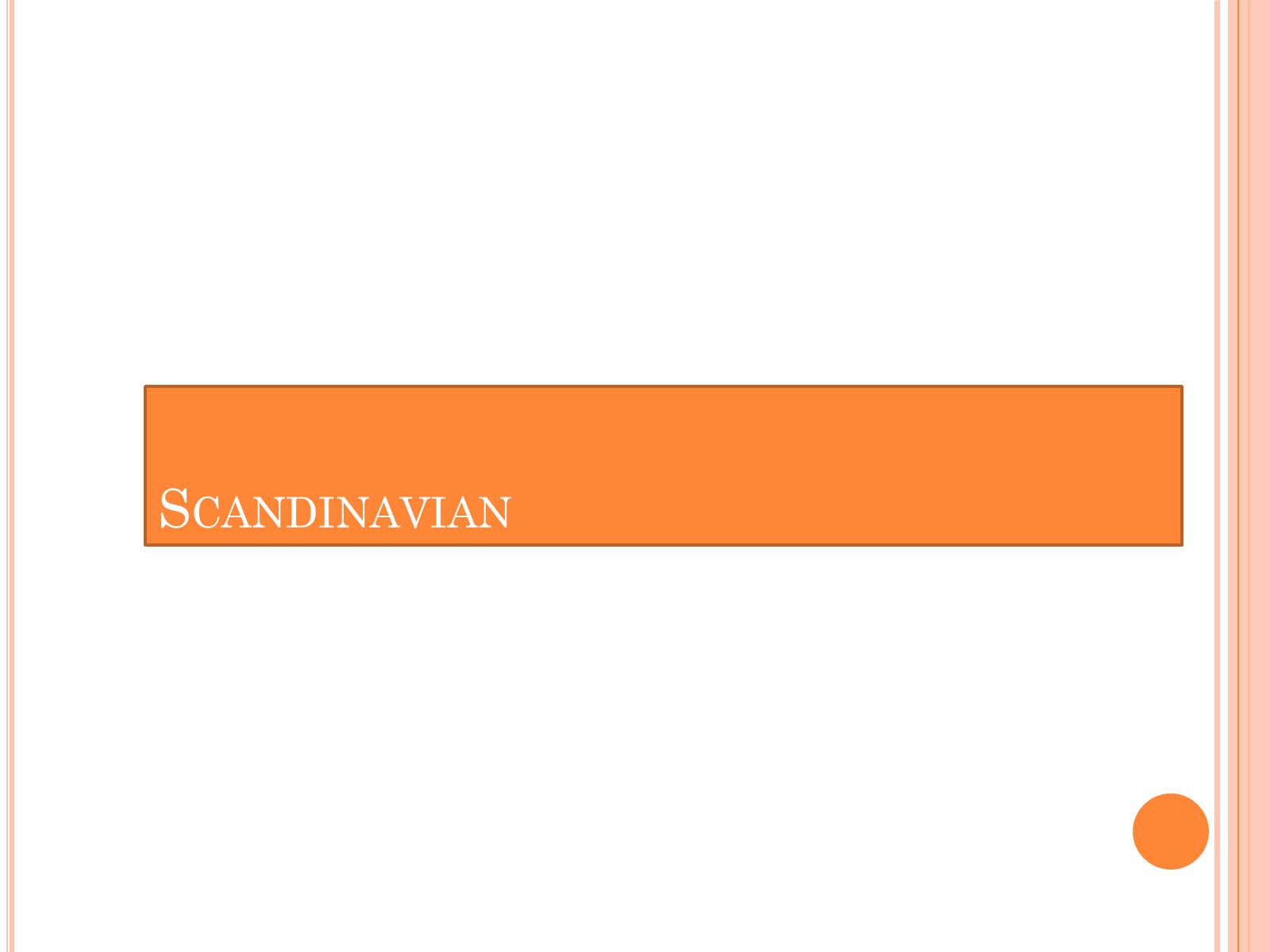
Scandinavian
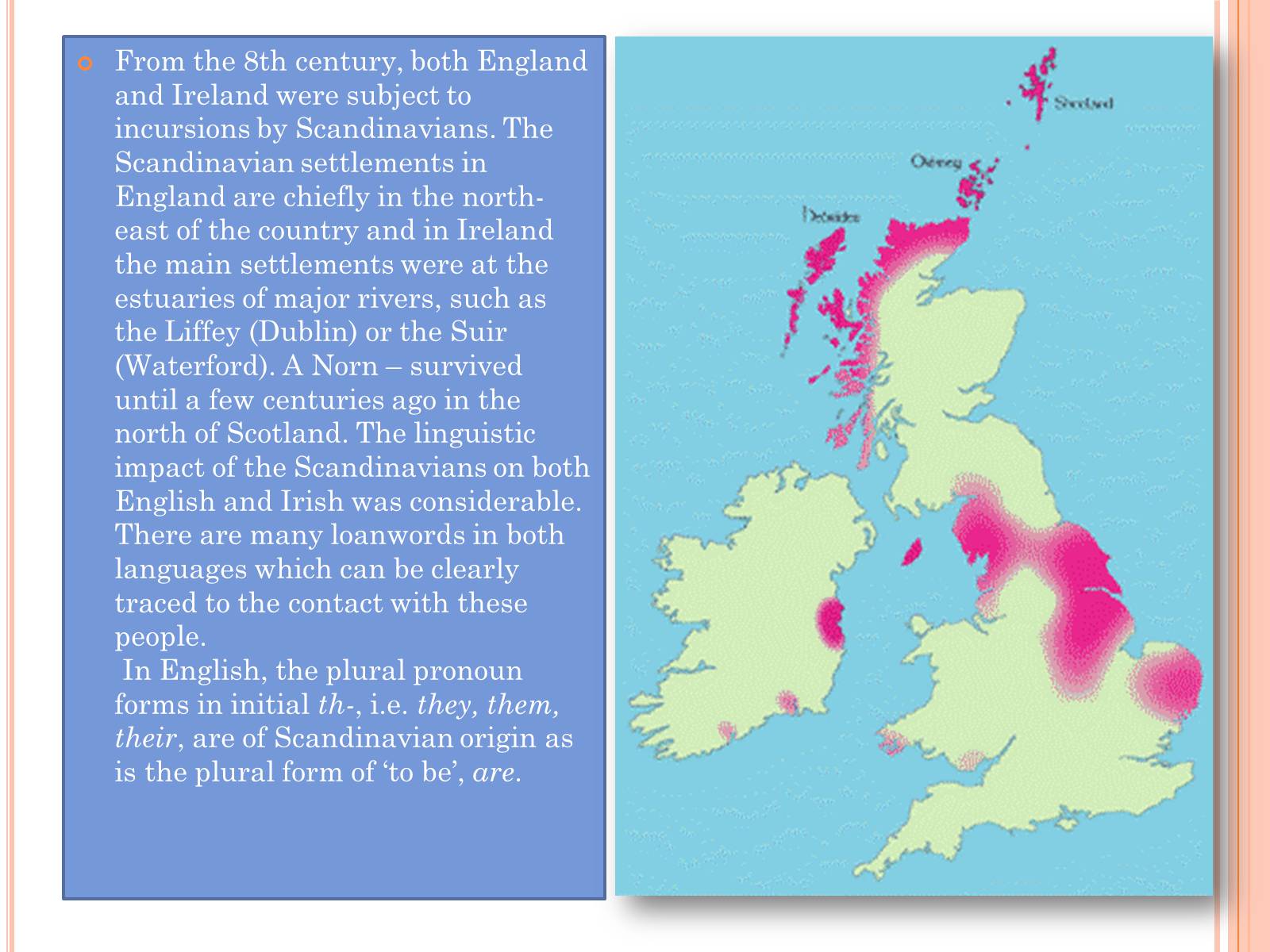
From the 8th century, both England and Ireland were subject to incursions by Scandinavians. The Scandinavian settlements in England are chiefly in the north-east of the country and in Ireland the main settlements were at the estuaries of major rivers, such as the Liffey (Dublin) or the Suir (Waterford). A Norn – survived until a few centuries ago in the north of Scotland. The linguistic impact of the Scandinavians on both English and Irish was considerable. There are many loanwords in both languages which can be clearly traced to the contact with these people. In English, the plural pronoun forms in initial th-, i.e. they, them, their, are of Scandinavian origin as is the plural form of ‘to be', are.
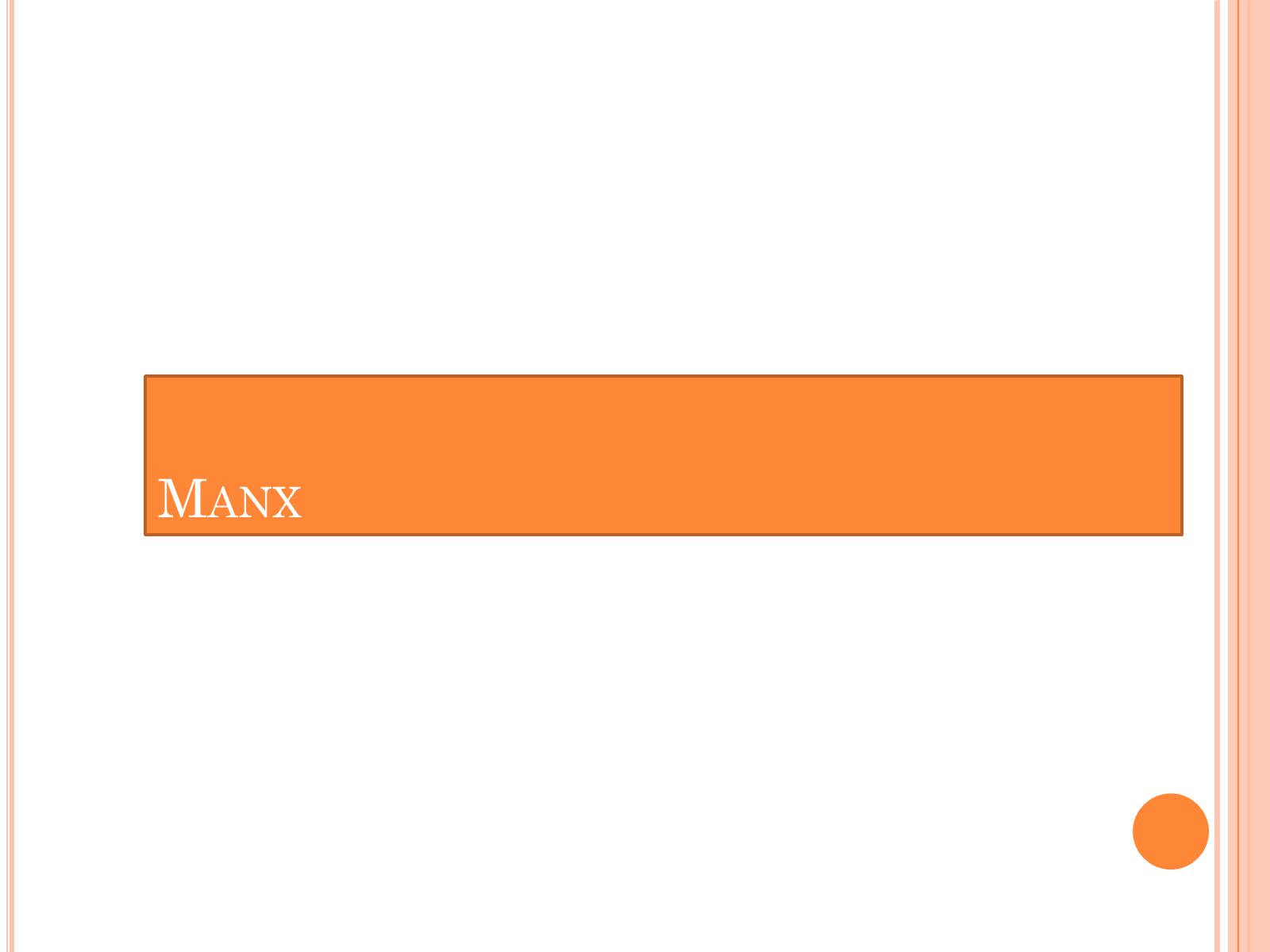
Manx
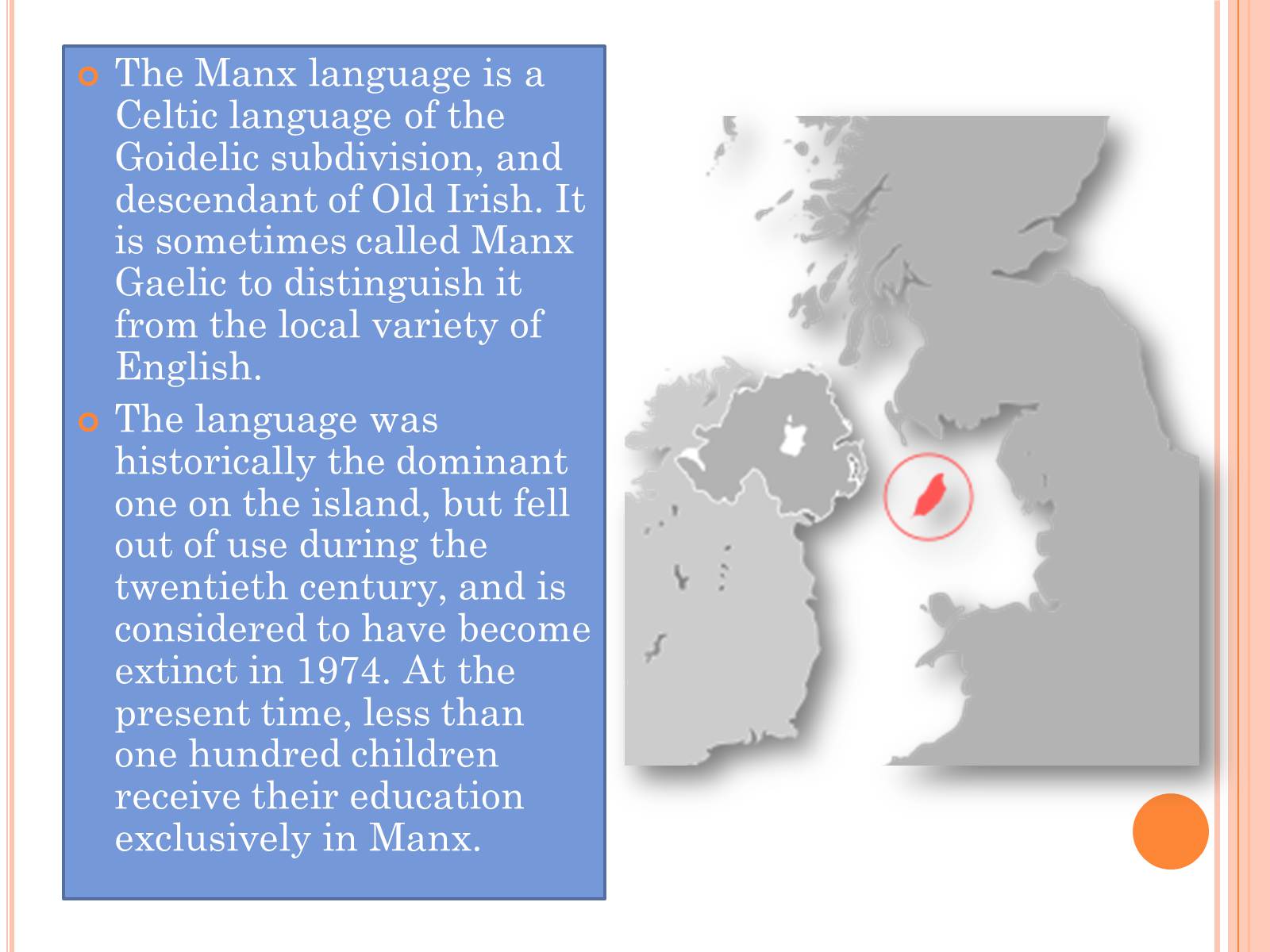
The Manx language is a Celtic language of the Goidelic subdivision, and descendant of Old Irish. It is sometimes called Manx Gaelic to distinguish it from the local variety of English.
The language was historically the dominant one on the island, but fell out of use during the twentieth century, and is considered to have become extinct in 1974. At the present time, less than one hundred children receive their education exclusively in Manx.

Welsh
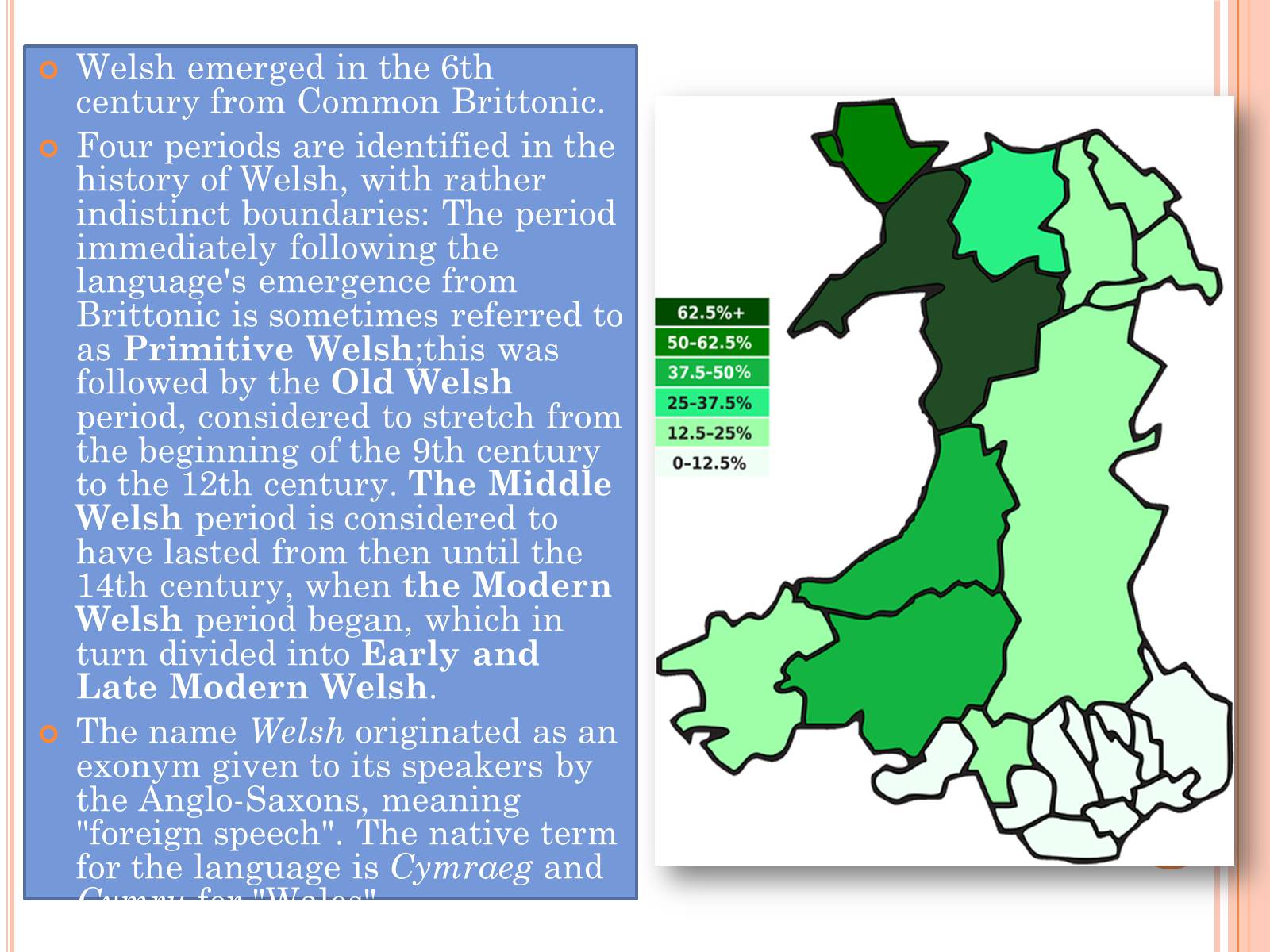
Welsh emerged in the 6th century from Common Brittonic.
Four periods are identified in the history of Welsh, with rather indistinct boundaries: The period immediately following the language's emergence from Brittonic is sometimes referred to as Primitive Welsh;this was followed by the Old Welsh period, considered to stretch from the beginning of the 9th century to the 12th century. The Middle Welsh period is considered to have lasted from then until the 14th century, when the Modern Welsh period began, which in turn divided into Early and Late Modern Welsh.
The name Welsh originated as an exonym given to its speakers by the Anglo-Saxons, meaning "foreign speech". The native term for the language is Cymraeg and Cymru for "Wales".

Irish Gaelic
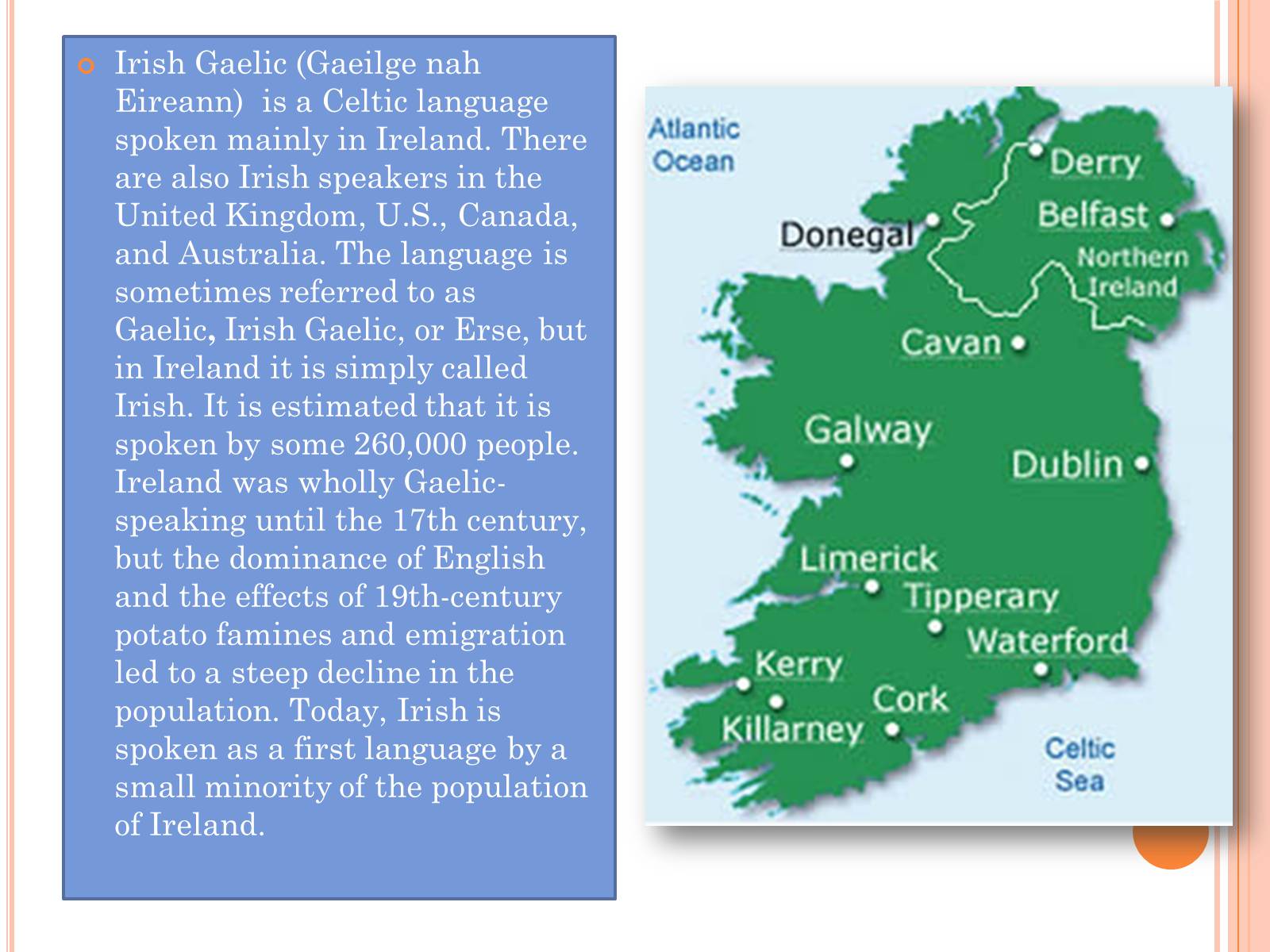
Irish Gaelic (Gaeilge nah Eireann) is a Celtic language spoken mainly in Ireland. There are also Irish speakers in the United Kingdom, U.S., Canada, and Australia. The language is sometimes referred to as Gaelic, Irish Gaelic, or Erse, but in Ireland it is simply called Irish. It is estimated that it is spoken by some 260,000 people. Ireland was wholly Gaelic-speaking until the 17th century, but the dominance of English and the effects of 19th-century potato famines and emigration led to a steep decline in the population. Today, Irish is spoken as a first language by a small minority of the population of Ireland.